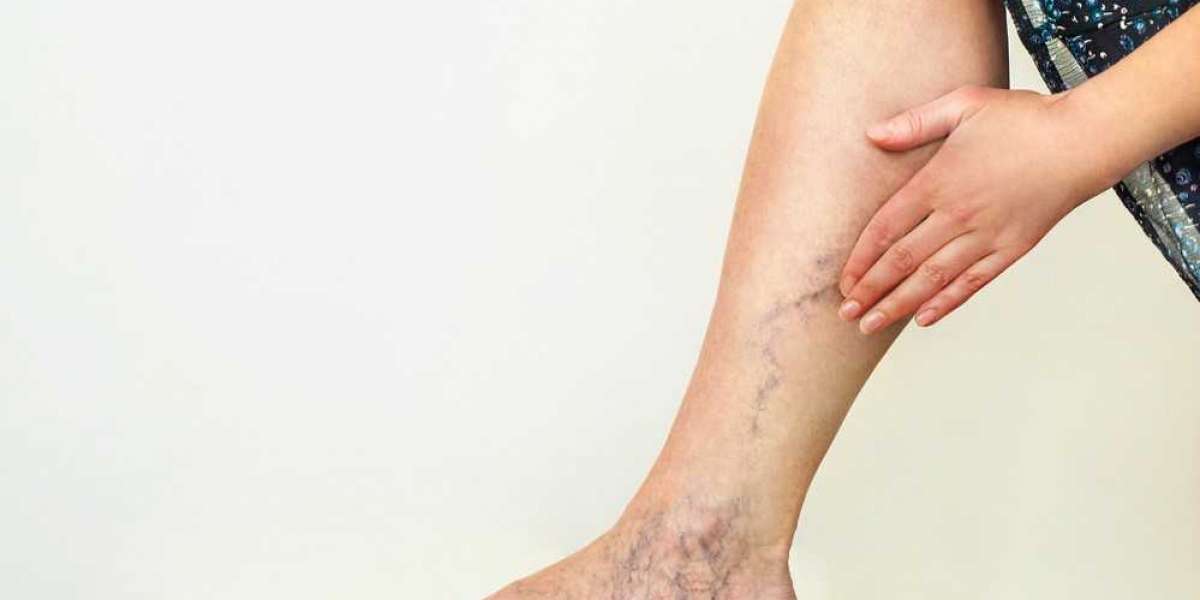While these veins may look like just a cosmetic issue, they can cause discomfort and lead to other health issues if left untreated. In this blog, we will explain what causes varicose veins in the legs and who is more likely to develop them.
What Are Varicose Veins?
According to the leading general surgeon in Gurgaon, varicose veins are enlarged, swollen veins that often appear dark purple or blue. They normally develop on the legs or feet due to prolonged standing and walking increasing pressure in the veins of the lower body. Our veins contain tiny valves that guide blood flow back to the heart. When these valves become weak or get damaged, blood starts collecting in the veins, making them stretch, twist, and bulge. As a result, varicose veins can form.
Common Causes of Varicose Veins in Legs
Here are some reasons why varicose veins develop in your legs:
1. Weak or Damaged Valves in the Veins
This is the main cause of varicose veins. The veins have tiny one-way valves that prevent blood from flowing backward. If these valves don’t work properly, blood collects in the vein, causing it to swell and become varicose.
2. Standing or Sitting for Long Periods
Jobs or routines that require prolonged sitting or standing can increase pressure in the veins in the legs. This makes it difficult for blood to flow back to the heart, and over time, the increased pressure can cause varicose veins. People like teachers, shop workers, and office employees who spend a lot of time in one position are more likely to develop this condition.
3. Age
As you age, your veins can become less flexible, and the valves inside them may not work as well. This is why varicose veins are more common in people over the age of 40 or 50.
4. Pregnancy
During pregnancy, your body makes extra blood to support the baby’s growth, which puts more pressure on your veins, especially in the legs. Hormonal changes can also relax the walls of the veins, making varicose veins more likely to appear. For many females, these veins usually improve after childbirth.
5. Being Overweight or Obese
Carrying extra weight puts extra pressure on the veins, especially those in the lower body. This pressure makes it harder for blood to move upwards, leading to varicose veins over time.
6. Family History
If you have a family history of varicose veins, then your chances of developing them increases.
7. Hormonal Changes
Hormones can affect the flexibility of vein walls. This is why women are more likely to develop varicose veins, especially during puberty, pregnancy, or menopause. Hormone replacement therapy may also increase the risk.
8. Lack of Exercise
Being inactive affects blood flow. Staying active helps improve blood flow back to the heart and lowers pressure in the leg veins. Lack of movement can lead to poor circulation and increase the chance of varicose veins.
Who Is at Risk?
You are at higher risk of getting varicose veins if you:
- Are over 40
- Are a woman
- Have a family history of varicose veins
- Are overweight
- Sit or stand for long periods
- Are pregnant or have had multiple pregnancies
Varicose Veins Treatment
Varicose veins can be treated. In mild cases, lifestyle changes like regular exercise, weight management, elevating your legs, and wearing compression stockings can help reduce symptoms. For more serious cases, the surgeon may recommend advanced treatments such as:
- Laser treatment: It uses light energy to seal off the affected veins, causing them to fade away.
- Sclerotherapy: A special solution is injected into the vein to shrink it
- Radiofrequency ablation: A heat-based treatment that uses radiofrequency energy to close off the damaged vein, allowing blood to reroute through healthier veins.
- Minimally invasive surgery: For large or painful varicose veins At Miracles Apollo Cradle/Spectra, our experts offer the most effective treatments for varicose veins with quick recovery and minimal discomfort.
When to See a Doctor?
- Persistent pain or heaviness in your legs.
- Swelling in the legs or ankles that gets worse over time.
- Skin discoloration or dark patches around the varicose veins.
- Itching, burning, or throbbing near the affected veins.
- Bleeding from varicose veins.
- Development of ulcers or sores near the ankles.
- If your symptoms are affecting daily life or sleep.
Early consultation helps prevent complications and ensures faster relief.
Conclusion:
Many people don’t realize that varicose veins are more than just visible lines on the legs—they’re a sign that something’s not working right inside your veins. Factors like long hours of standing or sitting, aging, hormonal changes, and even your genes can increase the risk. Over time, this can lead to aching, heaviness, or swelling in the legs. If you are experiencing these symptoms, don’t wait for them to worsen. Consult the general surgeon near you for the right diagnosis and advanced treatment options.




